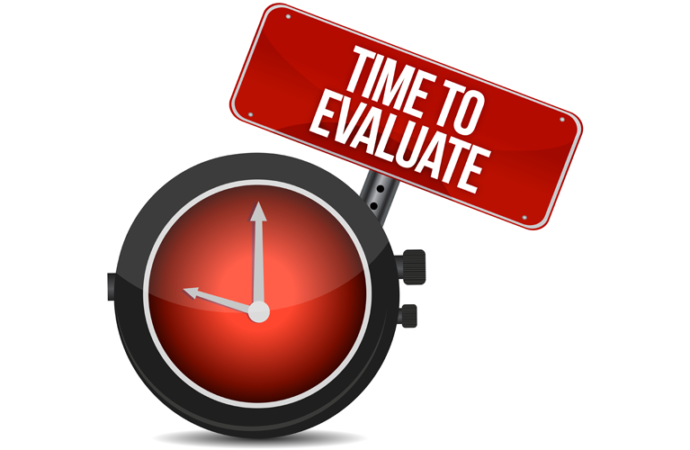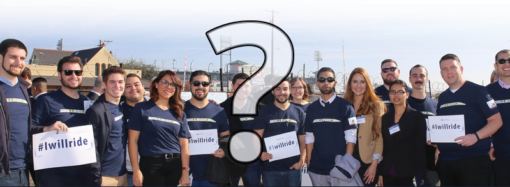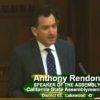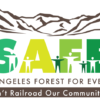To be frank, this newest draft plan does not demonstrate that the Authority is on the right path to build the High-Speed Rail system. It does not execute what 52.6% of the public agreed to in November 2008. In addition there has been a significant increase in cost. The 2016 plan’s capital cost was estimated at $64.2 billion and now the 2018 draft plan spans from a low cost of $63.2 billion, a base line of $77.3 billion and a high cost of $98.1 billion
To appreciate where we are today it requires a look at the past:
According to the November 2008 Business Plan the cost to build Phase 1 would be $33.625 billion. In 2009 the authority told the Legislature the cost would increase to $42.6 billion using year‐of‐expenditure dollars to account for inflation.
No doubt the cost to build the project will exceed the newest high-level estimate of $98.1 billion. Why? Because other segments will rise above what is projected because of the complexity of construction in the larger cities and tunneling through mountain ranges to get to Southern California. Plus six years ago the draft 2012 business plan projected a low capital expenditure of $98 billion prepared in November 2011. It was dubbed the “honest plan.” As we know “time is money” guaranteeing everything will be costlier 6 years later.
Under former CEO Roelof van Ark’s term of office, May 2010 to January 2012, the Draft 2012 business plan was developed. There was a public outcry after the report was published because it revealed a capital cost ranging from $98 billion to $117 billion. On Van Ark’s way out he said his greatest achievement was the delivery of “an honest and realistic business plan,” according to a SF Gate article dated January 2012.
When the 2012 Final plan was produced in April, the cost dropped $30 billion to approximately $68.377 billion primarily because of the introduction of the blended plan where the track or corridor is shared with freight, commuter and High-Speed Rail, instead of exclusive tracks for HSR. It was called the “Better, Faster, Cheaper” plan.
While the April 2012 Final Business Plan projected costs in the mid-sixty billion range, there were early warning signs that the costs would be a lot higher than advertised, notwithstanding vehement Rail Authority denials.
Here are a couple of examples.
When preparing input for the 2014 Business Plan, a company called URS (the company that managed the Fresno to Bakersfield segment) protested they were told to use the 2012 Business Plan (which used 2010 cost estimates) as the baseline for their January 2014 Progress report even though their professional opinion was that in 3 years the costs had risen. In the end, instead of going up, the Authority dropped the cost more than a half million dollars.
Another instance was when the Federal Rail Administration (FRA) put out a confidential report that the costs for the first 118 miles of the project in the Central Valley would be $9-10 billion. While the Authority staunchly denied the content of this report, the Authority has finally increased the estimate from $6 billion to $10.6 billion. See the Los Angeles Times story.
So despite the quote from a High-Speed Rail consultant at the last board meeting that the “worst case scenario” has happened with the Central Valley, the cost increase was no surprise. The Authority was well aware their numbers were too low. The game, commonly played in infrastructure projects, is to get the project going and slowly increase the cost numbers so when substantial dollars are already invested, politicians feel they must just keep going in order not to waste the dollars sunk into the project.
It is true that legitimate unplanned issues can be uncovered in the building and planning process, especially in the case of a design/build contract when building starts prior to 30% of the plan being developed. No doubt the Authority rushed to begin construction prematurely. Perhaps this was partially because of the American Recovery and Reinvestment Act of 2009 (ARRA) funding deadlines. They had been granted $2.553 billion dollars that had to be spent by September 2017. In addition, there was a great deal of political pressure to get a shovel in the ground. The shoot, aim, ready approach no doubt was the cause of some terrific cost overruns, delays in property acquisition, delay penalties and what is called change orders. But the deliberate estimation of artificially low project costs is unfortunately the practice in most capital projects.
For example look the Bay Bridge construction, costs that rose from $1 billion to $6.77 billion and is a stellar example of a botched process, a very screwed up design process, deliberately hiding the facts, avoiding public records requests, massive underestimate of costs and poor construction to boot. This was determined from a state examination, called Lessons Learned, headed by then Senator Mark DeSaulnier. See the Bay Bridge Report
In addition, Boston’s Big Dig went from $2.5 billion to $13 billion. According to Mega project expert Bent Flvbjerg, cost overrun estimates on passenger rail projects were on average 45% more and to add to the problem, ridership estimates were typically 70% lower than forecast, delivering a double whammy to the bottom line.
Flvbjerg says an appropriate slogan appears to be “over budget, over time, over and over again.” Flvbjerg report
Confirming that is a truthful statement published by former Mayor Willie Brown.
“In the world of civic projects, the first budget is really just a down payment: if people knew the real cost from the start, nothing would ever get approved”. The idea is to get going. Start digging a hole and make it so big, there is no alternative to coming up with the money to fill it in.” Willie Brown SFGate article
Speaking of planes, trains and automobiles:
In the business plan the Authority discusses other travel modes and how they compare to high-speed Rail. Look at Exhibit 1.3, page 7, the chart has travel times by transportation type. The Authority shows car, existing train travel and high-speed rail. It does not show plane travel.
They admit on the page before that flying is quicker from Northern California to Southern California, perhaps an hour and a half but say it’s a total of 4 to 5 hours when you tack on travel time to and from the airport, finding parking and going through security checks. Yet they add no such time requirements on the high-speed rail line.
And note the fastest train appears to be 213 minutes with three stops from San Francisco to Los Angeles. It was 195 minutes in the prior business plan. You see the Rail Authority is supposed to provide non-stop service in two hours and forty minutes or 160 minutes.
Extracting the three stops to replicate a non-stop express train would not use up 53 minutes. Just to put things in perspective, Trip Advisor reports that most long distance trains in Europe stop for only one or two minutes at intermediate stations. Granted such as at key transfer points like the airport, the stop would be lengthened. But there is no way taking out the dwell time for three stops can be reconciled with Prop 1A requirements.
Naturally speed and time are tied together. The slower the train goes, logically the longer it will take to get to the destination. Documents show that San Francisco has protested higher speeds. See the Los Angeles Times article. It shows 30 miles of additional track that will operate at reduced speed. “Of the roughly 434 miles of track between Los Angeles and San Francisco, 136 miles nearly one-third of the total could have at least some speed restrictions.”
These slowdowns no doubt will result in further reduced travel time. Not only does it violate Prop 1A but time matters because once it hits the 3-hour time mark to ride on the train, travelers choose planes.
Missing important work:
The Authority’s plan calls for a phased approach, meaning a little at a time and leaving some of the expensive parts until later, such as developing the Central Valley and the segment from San Francisco to Gilroy first. This is the first time that the plan showed Gilroy as being electrified. In the past, Union Pacific who owns the tracks south of San Jose has flat out said no. If they eventually do agree, no one is sure what the cost will be. Another bit of news is the Authority has granted funding $700K to Caltrain for the electrification project using Prop 1A dollars and cap & trade dollars. No one is sure if Caltrain has actually received the money though.
Located on page 15, the business plan says, “Under this approach the Pacheco Tunnels and the connection to Merced, funding permitted will be the last link of the Silicon Valley to Central Valley line. Also the tunnel segment required to connect San Francisco and Gilroy to the Central Valley presents challenges to environmental planning, cost, technical complexity, schedule and available funding to complete.”
And last, the tunnel connecting Caltrain’s San Francisco’s 4th and King station and the Salesforce Transit Center (formerly the Transbay Terminal) will also be delayed. Cutting out expensive elements of construction certainly reduces cost but is not the plan that they were supposed to build.
Pennies from Heaven:
Where will the dollars come from to finish the Initial Operating Segment, the Central Valley to Silicon Valley? The baseline cost is estimated around $29.5 billion base and $36.8 billion on the high-side. And remember it doesn’t include the extension to Merced, the Pacheco Tunnels and it says it’s from 4th and King in San Francisco. If the tunnel from 4th and King and Salesforce Transit Center is included that will add another $2.0 and $2.6 billion to the cost.
More on finances:
On page 37 there is exhibit 3.5 which is easy to understand. It shows what dollars the Authority started with, what they spent and what’s left to spend on the first operating segment. Bottom line they spent $4.062 billion from all sources. Here’s what they have left:
2010 Federal Grant $929 million
Prop 1A planning money $292 million
Prop 1A Central Valley construction $2.066 billion
Prop 1A Central Valley to Silicon Valley $4.166 billion
Cap & Trade through 12/17 $1.103 billion
Total $8.556 billion- That is what they have now. Below this sub-total line is the fantasy line. It shows they will get $4 to 4.5 billion more in cap & trade and between $3.9 billion & $11.1 billion from financing the future stream of cap & trade money until 2050 when in fact the program ends in 2030. Even though this is a step away from reality, the most they estimate is $15.6 billion of future dollars plus the $8.556 billions of real money which does not equal the cost, even the low estimates.
The Authority believes there is a chance they can bridge the gap with a contribution from the feds. They say:
“The federal government built the nation’s interstate highway system through grants to the states covering 90 percent of the costs of building the system. Historically, the federal government has provided grants averaging 50 percent and higher to partners in the cost of building regional passenger rail systems, such as Bay Area Rapid Transit (BART).”
“With this in mind, it is not unreasonable to expect that over the course of the development of the program, there will be opportunities for significant additional federal financial assistance in the form of infrastructure funding or federal financing.”
In fact it is not reasonable to expect free money in the form of grants since the trend for several years now is that the federal government has not invested in large state infrastructure projects. The United States is billions behind in repairing roads and other decaying infrastructure. The current administration is looking for private and state investment for new infrastructure projects. Maybe there will be some modest loan programs but no gifts are likely. Plus, Jerry Brown has greatly angered the current administration most currently the Sanctuary City issue to say nothing about the low percentage of voters’ support for Trump’s presidency. President Trump has also been quoted several times saying “California is out of control.”
Cap & Trade funding was originally considered a stopgap but since no private or additional federal investment have materialized now it appears to be the main source of funding.
Promises in Prop 1A:
There were important voter promises and assurances made in Prop 1A. Here are two. First, “thou shalt not begin building an operating segment without having the cash to build that segment” and second, “thou shalt not build an operating segment that will require a state subsidy.”
Prior to the passage of the Revised 2012 business plan and the vote in the Legislature to authorize construction dollars, here’s what Dan Richard the board chairman said at a 4-hour meeting held on March 14, 2012 right before the Revised 2012 plan was released. March 14, 2012 Senate Meeting Go to minute marker 2 hours and 22 minutes and play for 2 minutes. Richard promised they would not begin a segment unless they had the funds to do so.
Lawsuit brewing:
In the past couple of years, the board finally understood they don’t have the funds to build the first operating segment. In order to change that stringent part of the proposition, the Authority worked with the Legislature to pass AB 1889 in 9/28/2016 that allows building to proceed as long as the project will have the money someday to finish the segment. Prop 1A clearly says they will have the funds along with dates they will receive the money for the segment so this someday promise is a major change.
The smallest section allowed in a “pay as you go” manner is an operating segment that will result in sufficient ridership to operate without a subsidy. No one is sure that Bakersfield to San Francisco will generate a positive cash flow. The Authority has listed ridership as a risk in their newest plan. See page 51 under Lessons learned and risks- it says, “Inaccurate ridership forecasts could create consequences for the program, including decreasing the level of private sector investment, increasing the public funding required and damaging stakeholder support.” According to Prop 1A, ridership is required to pay for the cost of operating the train. Operational subsidies are strictly forbidden.
There is a legal question concerning the right of the legislature to alter a voter initiative. This appears to be prohibited by the state constitution.
Sometime early this year a court will hear the argument of whether the Legislature has the right to change a primary tenet of a publicly passed proposition. If the court rules that the Legislature does not have the authority to do this, that is, beginning an operating segment without the funds to complete it, the program could be halted by the courts.
In the 4-hour Senate meeting held in 2012, Senator Joe Simitian gave Dan Richard some advice. “If you are riding a dead horse, it’s time to dismount.” Maybe it’s time to follow Senator Simitian’s advice.





